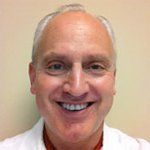The Rules of the Road
A review of the rules of the road for doctors, because everyone remembers their first license.
Craig R. Hildreth, MD

I heard that you recently got your first license. Congratulations!
I think everyone remembers when they first received their driver’s license. It marks a time in a teen’s life when feelings of freedom and independence (“See you later, Pops!”) compete with sheer terror (“Was I supposed to turn left there?”) for the right to dominate the psyche of the tenderfoot driver. In my hometown, shortly after we sophomores received the precious slips, some NASCAR wannabes developed an attitude of, shall we say, insouciance toward the lessons learned in driver’s education. Not surprisingly, our local police officers were delighted to itemize our various transgressions to parents, school principals, head coaches, and other unsympathetic ears.
Even I, Mr. Caution himself, succumbed to the temptation to inflate my stock with the cool kids by screeching around the city streets. One night while joyriding with a car full of buddies, I hit the side of a bank-at three miles an hour, no less-a feat that requires a hitherto unknown talent for clumsiness. Thus, I was immortalized in the Gallery of Nincompoops, Vehicular Wing.
Pardon? Oh, you just received your medical license. My apologies; here I am rambling on about how to start your motoring career. Wait, though-don’t leave just yet. If we think about it, medicine and driving have several principles in common. Please, take a backseat and review the rules of the road for doctors with me.
1. Remember that your license is a revocable privilege. Performing under the influence, disobeying the law, or practicing recklessly can lead to you becoming a permanent pedestrian. No one ever thinks about losing their license, but it does happen.
2. If you don’t take the time to read the manual, how will you drive the car? Both automobiles and medicine are complicated, and if you don’t keep up with your learning you may find yourself leaning against a broken-down heap, trying to thumb a ride.
3. Drive defensively, to minimize mishaps. Smart drivers always assume that no one is paying attention to the road. You must constantly be on the lookout for problems. Remember, an accident that should have been prevented is not an accident.
4. Watch signs carefully-they disappear quickly. Just as you can miss your exit, you can flub a diagnosis if you are not paying attention to the clues aligned before you. Keep a sharp eye out for tiny details that may lead to big discoveries.
5. A wrong turn only lasts as long as you fail to recognize it as a wrong turn. All doctors have times when they travel down the wrong path. There is no shame in making a U-turn, so if you find yourself lost, swallow your pride and get you and your patient back on the right road.
6.Sometimes exceeding the speed limit is justifiable. Great doctors are not afraid to challenge the rules. To put it politely, sometimes you have to circumvent half-baked bureaucrats in order to get your patient on the right treatment.
7. Breakdowns are inevitable-prepare yourself. Even the best-laid plans can crumble. Ever been on a road trip that was a disaster? No matter how sad, no matter how awkward, when we lose a patient it does not mean that we cancel our journey.
8.A good attitude can overcome a bad road. If you find yourself axle deep in mud or stuck on a two-lane cattle path, don’t burn the map. Be of good cheer. Doctors who practice with a buoyant heart will never fail to reach their destination.
9.Always carpool. Beware of any doctor who practices in solitude. We need constant companionship and advice from colleagues, nurses, patients, families, the nice lady in the gift shop, and many others. Take on passengers and listen to what they have to say.
10.Remaining parked in the garage is not an option. Remember what Sir William Osler said: “He who studies medicine without books sails an uncharted sea, but he who studies medicine without patients does not go to sea at all.” I’m sure if Sir William were here today, he would give a modern twist to his adage: “You just spent all that money on a fancy sports car and you are too lazy to drive? Buckle up, pal, and tell your secretary to fill your schedule to the brim. You are hitting the road today-the road to fulfillment.”